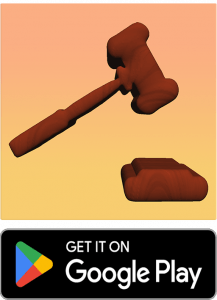A History of Farming and Technology
The history of farming and technology is a narrative of innovation, resilience, and transformation. For millennia, agriculture has been the backbone of human civilization, providing sustenance and shaping societies. The evolution of farming techniques and the integration of technology have played pivotal roles in advancing agricultural productivity and revolutionizing the way we produce food.
Early human societies practiced subsistence farming, relying on manual labor and basic tools like plows and sickles. As communities grew, so did the demand for more efficient methods. The advent of the plow marked a significant advancement, enabling farmers to till larger areas and increase yields. The harnessing of animals for plowing further expedited the process.
Changes Began
The Industrial Revolution in the 18th century sparked a profound shift in farming. Mechanization took center stage with inventions like the seed drill and mechanical reaper, enabling farmers to sow seeds in neat rows and harvest crops more swiftly. The 20th century saw the rise of tractors, pesticides, and synthetic fertilizers, dramatically boosting yields and turning agriculture into agribusiness.
The latter part of the 20th century witnessed the birth of the “Green Revolution.” Driven by advancements in genetics and biotechnology, high-yield crop varieties were developed, saving millions from hunger. The integration of technology expanded into precision farming, with satellite imagery, GPS, and data analytics aiding in optimized planting, irrigation, and resource allocation.
More Recent Times
In recent decades, the concept of sustainable agriculture has gained prominence. Technology has been harnessed to develop eco-friendly practices, such as no-till farming and organic farming. Vertical farming, hydroponics, and aquaponics are innovative approaches addressing space and resource constraints.
Moreover, the digital age has ushered in the era of “smart farming” or “farming 4.0.” The Internet of Things (IoT), drones, and sensor networks provide real-time data on soil conditions, weather patterns, and crop health. This data-driven approach enhances decision-making, minimizes waste, and maximizes yields.
The history of farming and technology narrates a compelling journey of adaptation and progress. From primitive tools to cutting-edge innovation, the collaboration between agricultural practices and technological advancements has shaped the way we cultivate the land and feed the world’s population. As challenges like climate change and food security intensify, this dynamic relationship continues to evolve, promising a future where sustainable practices and technological prowess converge for a resilient and bountiful agricultural landscape.
My history of technology and Farming
I do not have a farming or rural background but since coming to live on the Atherton Tablelands in Far North Queensland, Australia I have learnt a great deal about the rural and farming community.
I came with my family to Atherton in 1981 from Papua New Guinea and we worked our own business as an advisory consultancy. To grow our business we invested in one of the first personal computers in our locality – a Wang machine which we learnt to use for word processing, spreadsheets and databases.
A little later we moved on to an IBM machine. One of the first uses for computers in the farming sector was bookkeeping and supported by the Department of Primary Industry I taught Quicken to groups of farmers. Computerised accounting was given a huge boost when the Government introduced GST in 2000. I taught many courses showing the classes how to do GST calculations and put in GST returns monthly or quarterly.
I worked on the FarmBiz scheme which was a Government initiative to encourage the farming community to use computers. Training in various areas was subsidised and some of the projects were computerised accounting, spreadsheets and databases for herd keeping. I travelled to farms in the area – dairy, beef, avocados, maize and sugar. I received wonderful hospitality and quite a lot of produce.

Now
My daughter went to James Cook University in Townsville and achieved a double major in computing. She later set up a computer sales and repair service in Atherton. Latterly she has branched out into writing apps and has produced an app after a farmer asked her if she could produce an app which would enable him to rapidly calculate the prices of cattle for sale at auction and keep a running total of what had been spent, using his phone. There are versions for I Phone and Androids. Cath travels to farms now and receives the same hospitality as I did 20 years ago. Farming and computers are now linked permanently.

